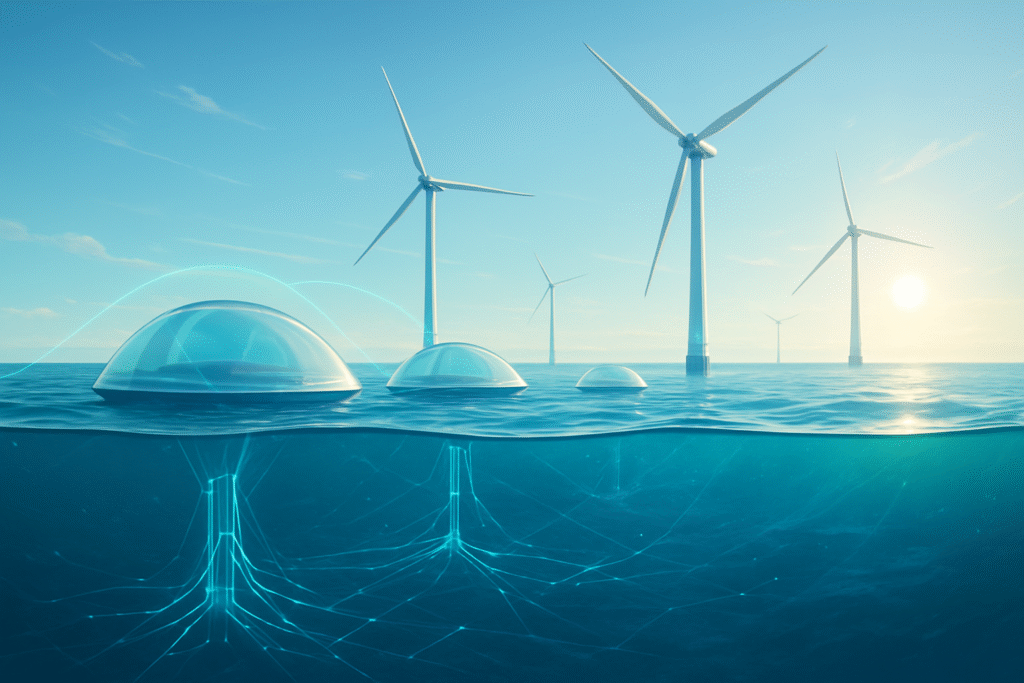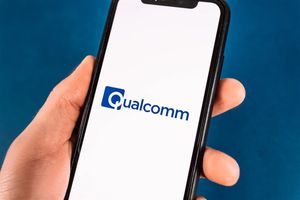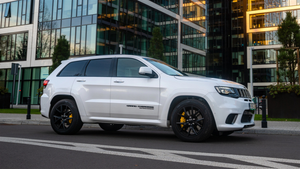
The collaborative research project 'VibroDrive+' between the Netherlands-based Dieseko Group and Swedish wave energy developer CorPower Ocean is poised to revolutionize the offshore renewable energy sector. Backed by €400,000 in Eureka Eurostars funding, this initiative focuses on optimizing the design and installation of anchors for marine energy and floating wind applications, promising a significant reduction in costs and environmental impact. This partnership, which builds on a successful 2021 collaboration, aims to accelerate the large-scale deployment of wave energy arrays and unlock the vast potential of floating offshore wind by making their foundational infrastructure more efficient and sustainable.
The immediate significance of VibroDrive+ lies in its potential to dramatically lower the Levelized Cost of Energy (LCoE) for offshore renewable projects. By streamlining anchor installation and minimizing environmental disturbance, the project is a critical step towards the commercial viability of next-generation ocean energy technologies. This advancement is particularly crucial for CorPower Ocean's wave energy arrays, which are designed to integrate with offshore wind farms, providing stable and predictable renewable output to complement intermittent wind generation.
Technical Prowess: UMACK Anchor Meets Vibratory Precision
At the heart of the VibroDrive+ project are two innovative technologies: CorPower Ocean's Universal Mooring, Anchor & Connectivity Kit (UMACK) anchor and Dieseko Group's advanced vibratory installation systems. The UMACK anchor is a geotechnical breakthrough, engineered to provide over 20 MegaNewton (MN) of uplift holding capacity with a pile mass of only 35 tonnes. This represents a 4-5 times higher vertical load capacity compared to a standard monopile of equivalent size, significantly reducing material requirements and foundation package costs. Its novel pile tip design actively reduces soil resistance during vibro-installation and then mobilizes a large volume of surrounding soil for substantial tensile capacity once vibrations cease. Designed for durability, it can resist over 100 million load cycles and adapt to various seabed conditions.
Dieseko Group's vibratory installation technology, exemplified by their 500MU vibratory hammer, offers a stark contrast to traditional impact piling. Vibratory hammers generate oscillating vertical forces at frequencies around 20-25 Hz, creating pore pressures in the soil that reduce resistance along the pile shaft, facilitating rapid penetration. This method is not only faster but also significantly quieter, producing underwater acoustic emissions (around 148 dB at 750m) that are substantially lower than those of impact piling, often eliminating the need for auxiliary noise mitigation. Furthermore, the technology maintains continuous control over the pile, preventing uncontrolled drops and ensuring verticality, with real-time monitoring allowing for immediate adjustments. This integrated approach, combining upending and driving into a single sequence, drastically cuts installation time and vessel day rates.
Compared to previous approaches, VibroDrive+ offers a "step change." Traditional offshore anchoring often involves heavy, large monopiles or gravity-based anchors, which are costly, time-consuming to install, and environmentally impactful due to high noise levels. The UMACK anchor's light mass and high capacity, combined with Dieseko's quiet and efficient vibratory installation, directly address these limitations, promising a more sustainable and economically attractive solution for the expanding offshore renewable energy sector. Initial reactions from the marine energy research community and industry experts have been overwhelmingly positive, with the project receiving strong consortium support and Eureka Eurostars funding, signaling confidence in its potential. Experts, including Matt Dickson, VibroDrive+ Project Manager, highlight the UMACK anchor's proven full-scale capability and its potential to deliver significant reductions in LCoE.
Market Shifts: Beneficiaries and Disruptors
The advancements spearheaded by the VibroDrive+ project are poised to create significant shifts in the offshore renewable energy market, benefiting key players and disrupting traditional practices. Primarily, CorPower Ocean and Dieseko Group stand to gain immensely, cementing their positions as leaders in wave energy technology and advanced foundation installation, respectively. CorPower Ocean's (OM:CPO) UMACK anchor, with its superior holding capacity and reduced mass, positions the company at the forefront of anchor design. Dieseko Group (private), as the provider of the advanced vibro hammer technology, will likely see increased demand for its equipment, enhancing its market share in offshore foundation installations.
Beyond the core partners, major offshore renewable energy developers such as Equinor (NYSE: EQNR), RWE Offshore Wind Holdings (ETR:RWE), and Invenergy California Offshore (private) are set to benefit from reduced foundation costs and a lower LCoE, making their floating offshore wind and wave energy projects more financially attractive and accelerating deployment in deeper waters. Offshore installation companies that adopt or invest in Dieseko's vibro hammer technology will gain a substantial competitive edge through faster, more efficient, and environmentally friendly installation processes. Conversely, companies reliant on traditional, noisier, and slower impact piling methods may face competitive disadvantages and pressure to adapt their service offerings or invest in new technologies.
The project has the potential to disrupt existing anchor design and manufacturing, pushing the industry towards more optimized and material-efficient solutions. It could also transform installation methods, reducing reliance on percussive piling. This disruption creates a clear market positioning and strategic advantage for early adopters, fostering cost leadership and environmental leadership. The reduced noise pollution during vibro installation is a significant environmental benefit, potentially streamlining regulatory approvals and enhancing the public image of offshore renewable energy projects. Furthermore, by making deep-water installations more economically viable, VibroDrive+ expands the addressable market for floating offshore wind and wave energy globally.
Wider Significance: Accelerating the Renewable Transition
The VibroDrive+ project fits squarely within the broader renewable energy landscape, addressing critical needs in the rapidly expanding sectors of ocean energy and floating offshore wind. With global decarbonization efforts intensifying, offshore wind is a cornerstone of many energy transition plans, and ocean energy is steadily moving towards commercial viability as a reliable and predictable renewable source. VibroDrive+ directly supports these trends by streamlining the foundational infrastructure, making offshore renewables more competitive and appealing for large-scale deployment.
For ocean energy, which often faces high deployment costs and the need for durable devices, VibroDrive+ tackles these challenges head-on by optimizing the UMACK anchor for wave energy arrays. This contributes to enhancing the reliability and grid stability offered by ocean energy. In floating offshore wind, a crucial technology for unlocking deep-water resources, VibroDrive+ addresses the need for robust, cost-effective mooring and anchoring systems. By lowering the LCoE for foundations, it helps accelerate the commercialization of floating wind, which is projected to see significant cost reductions by 2035.
The wider impacts on accelerating renewable energy adoption are significant: substantial cost reductions, increased installation efficiency, and a reduced environmental footprint, particularly through minimized noise emissions during installation. This also unlocks new resource areas by enabling cost-effective deployment in deeper waters and contributes to enhanced grid stability through predictable wave energy. However, challenges remain. The technology requires thorough validation of its geotechnical performance in diverse real-world offshore conditions. Scaling up for widespread commercialization will also involve overcoming hurdles in manufacturing capacity, supply chain development, and logistics. While vibro-installation offers reduced noise, its specific environmental impact compared to other quieter methods (e.g., suction caissons) will require detailed assessment. VibroDrive+ builds upon previous milestones like the first offshore wind farms and the rise of floating offshore wind, but it distinguishes itself by focusing on optimizing the foundational infrastructure and installation process for the next generation of these technologies, making them more economically viable and environmentally sound.
Future Horizons: Beyond the Breaking Waves
In the near term, the VibroDrive+ project is undergoing intensive laboratory testing at the IWES Fraunhofer Institute in Hannover, which commenced in December 2025. These trials involve multiple installations of the UMACK anchor, coupled with static and cyclic load testing, to meticulously assess how vibratory methods enhance geotechnical performance and installation predictability across various seabed conditions. This crucial research phase aims to refine the technology and build a robust understanding of its behavior in diverse marine environments.
Looking further ahead, the long-term vision is the widespread commercial deployment of this advanced anchoring technology. Project managers see its continued development as a vital step towards this goal, emphasizing the UMACK anchor's essential role in the future rollout of CorPower Ocean's wave energy arrays, particularly for integration within or near offshore wind farms. Beyond wave energy and floating offshore wind, the UMACK anchor is designed as a "universal anchor system" suitable for "other offshore applications." This versatility suggests potential use cases in offshore aquaculture for anchoring large-scale fish farms, providing stable foundations for scientific research platforms in deep waters, supporting temporary offshore installations like construction barges, and potentially anchoring components of subsea power transmission systems or other critical marine infrastructure where traditional anchoring is challenging.
Despite the promising outlook, challenges for widespread adoption include consistently achieving rapid and predictable installation across highly varied seabed conditions, demonstrating a significantly lower environmental footprint compared to all conventional methods, and proving the economic advantage (lowest possible LCoE) at a commercial scale. Thorough geotechnical performance validation in diverse real-world scenarios is also paramount for building confidence and ensuring long-term reliability. Experts, including Anro Olivier from Dieseko Group, express optimism, highlighting the "exciting potential" of Wave Energy Conversion (WEC) technology and viewing VibroDrive+ as a "significant milestone" towards large-scale commercial deployment. Matt Dickson predicts that this technology will deliver a "step change in reduced foundation package costs, and therefore LCoE," for a range of floating offshore structures, underscoring its pivotal role in making offshore renewable energy more economically competitive and environmentally sound.
A Foundational Shift for Ocean Renewables
The VibroDrive+ project represents a pivotal moment in the evolution of offshore renewable energy infrastructure. The collaboration between Dieseko Group and CorPower Ocean has yielded a foundational innovation in anchoring technology that promises to significantly lower the Levelized Cost of Energy (LCoE) for both wave energy and floating offshore wind. Key takeaways include the UMACK anchor's remarkable capacity-to-mass ratio, Dieseko's efficient and environmentally friendly vibratory installation, and the project's direct contribution to accelerating the global transition to renewable energy by making deep-water installations more economically and ecologically viable.
This development's significance in the history of offshore renewable energy is profound. It marks a shift from simply proving the concept of offshore generation to optimizing the fundamental components for large-scale commercialization. By addressing critical challenges in cost, installation time, and environmental impact, VibroDrive+ sets a new benchmark for how offshore foundations will be designed and deployed. Its long-term impact will be felt across the entire offshore renewable energy value chain, from developers and manufacturers to installation companies and the wider marine environment.
In the coming weeks and months, all eyes will be on the laboratory testing at the IWES Fraunhofer Institute, which will provide crucial data on the UMACK anchor's performance under vibratory installation in varied seabed conditions. These results will be instrumental in validating the technology's claims and paving the way for further full-scale demonstrations and eventual commercial rollout. The success of VibroDrive+ will not only accelerate the deployment of wave and floating wind farms but also inspire further innovation in the foundational technologies that underpin our clean energy future.
This content is intended for informational purposes only and represents analysis of current AI developments.
TokenRing AI delivers enterprise-grade solutions for multi-agent AI workflow orchestration, AI-powered development tools, and seamless remote collaboration platforms.
For more information, visit https://www.tokenring.ai/.






